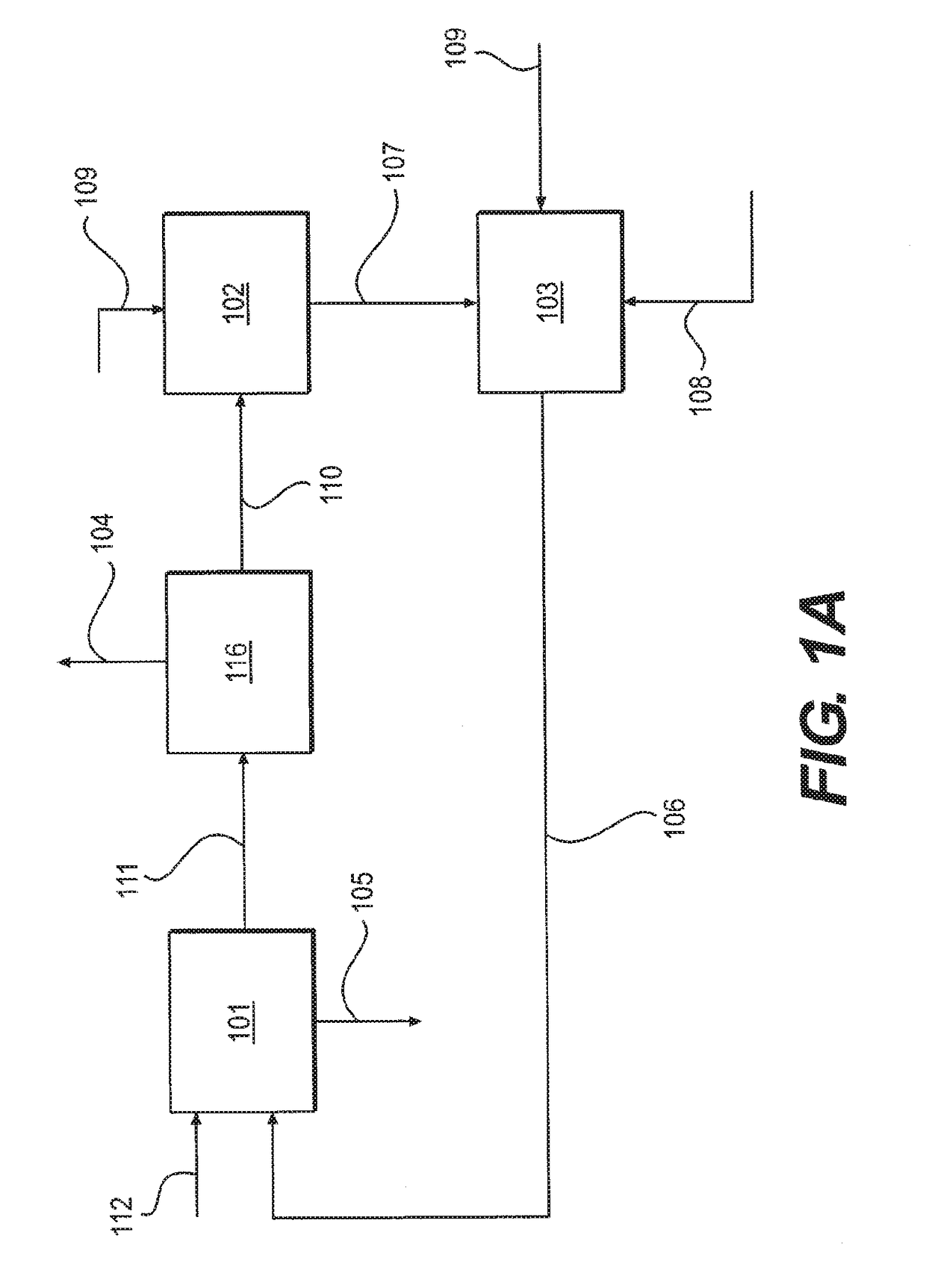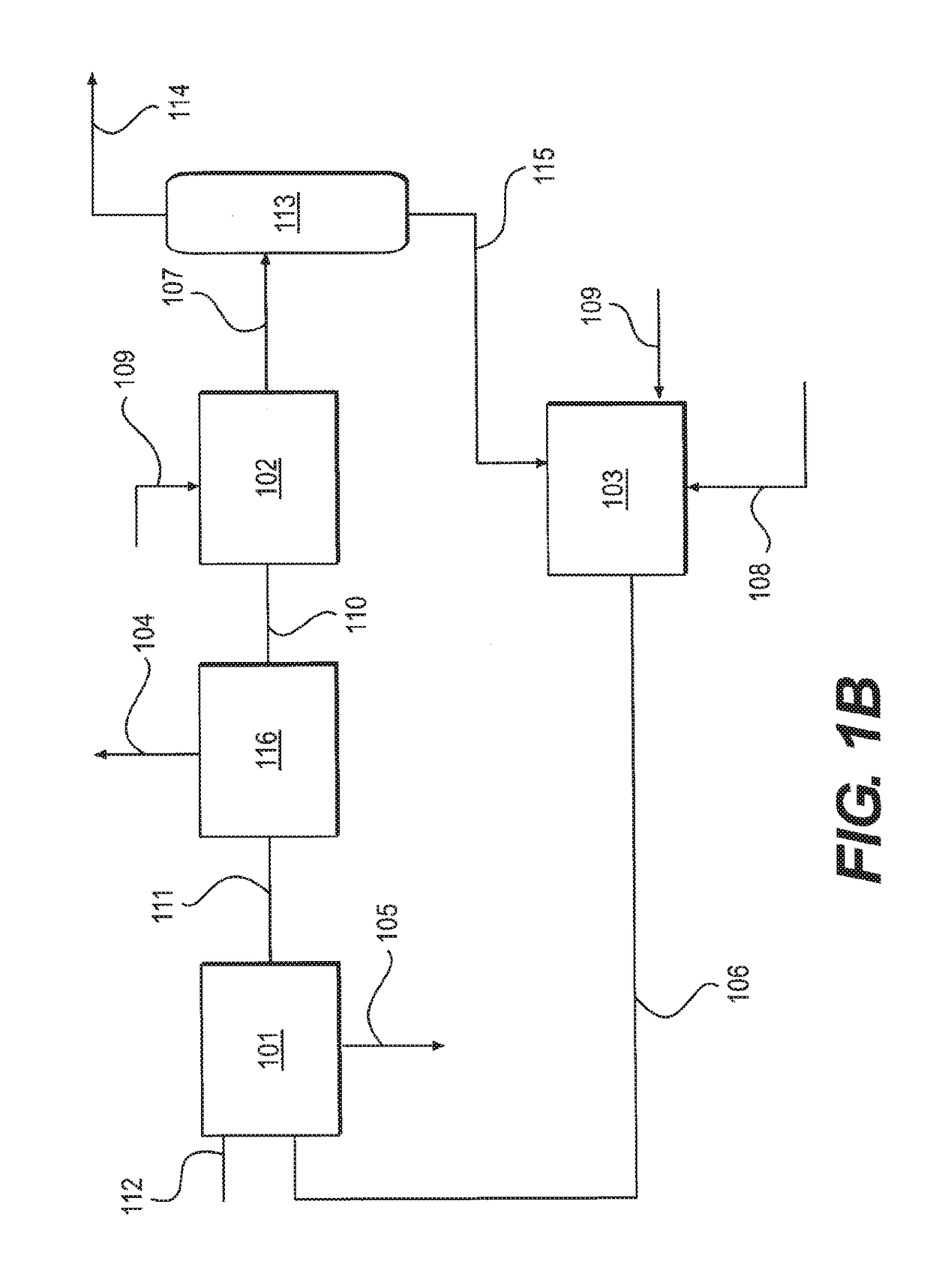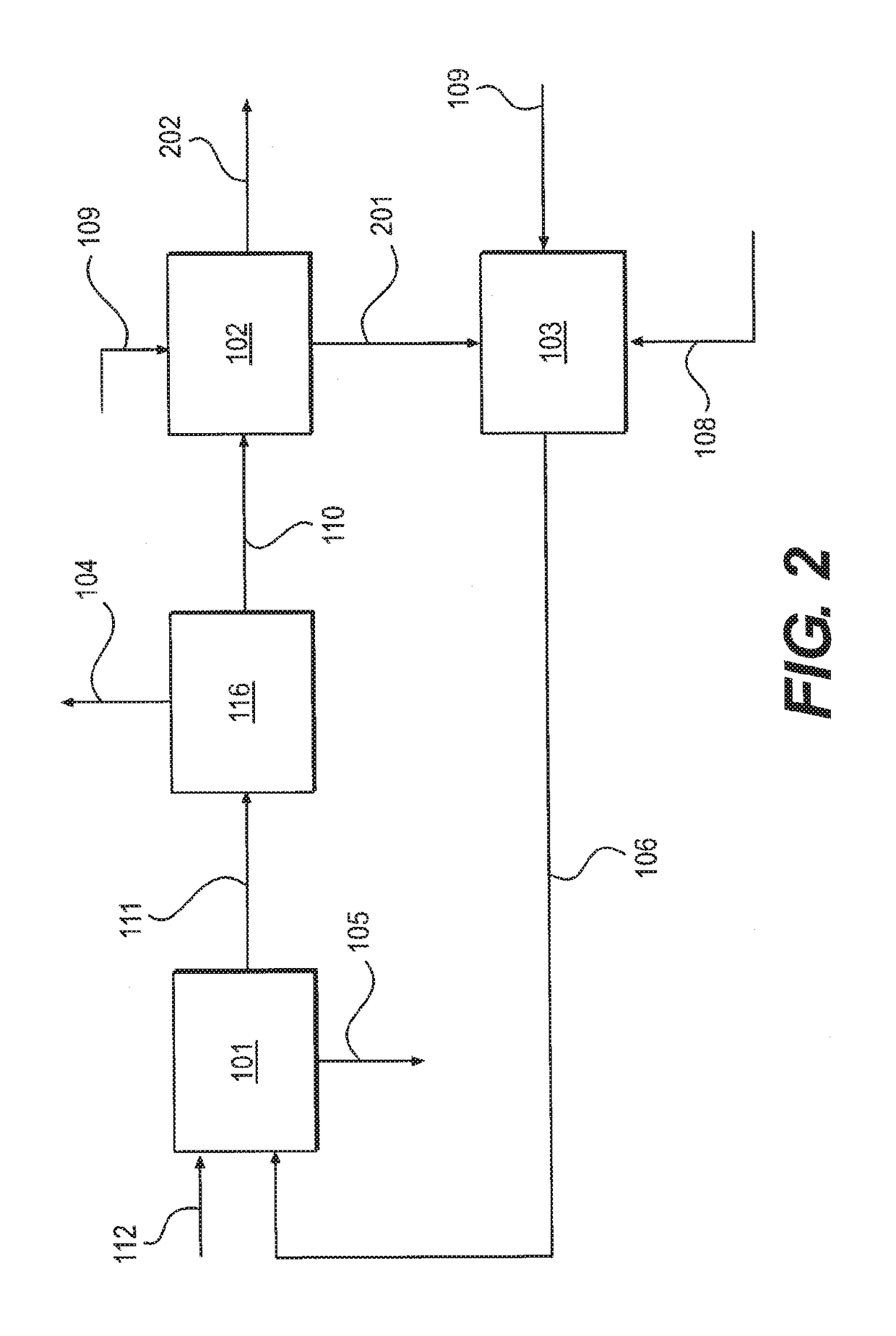A Process for Producing Olefins Using Aromatic Saturation
a technology of aromatic saturation and olefins, which is applied in the field of process for increasing olefin production, can solve the problems of limited petrochemical/refinery processes, limited the possibility of improving olefin yield, and existing methods of olefin production remain incapable of adjusting to meet these needs
- Summary
- Abstract
- Description
- Claims
- Application Information
AI Technical Summary
Benefits of technology
Problems solved by technology
Method used
Image
Examples
Embodiment Construction
[0082]Referring now to FIG. 1A, where a process for increasing olefin production using a raw pyrolysis gasoline stream is illustrated, where a naphtha rich hydrocarbon stream is fed through a line (112) into a steam cracking unit (101) to produce a steam-cracked hydrocarbon stream (111) and a heavy pyrolysis oil stream (105). The steam-cracked hydrocarbon stream is fed to a separating unit (116) to separate the steam-cracked hydrocarbon stream (111) into an olefin rich stream (104) and a raw pyrolysis gasoline stream (110). The raw pyrolysis gasoline stream is sent to a hydrotreating unit (102) to at least partially hydrogenate aromatic and / or olefinic components with a hydrogen gas stream (109) and remove nitrogen and / or sulfur containing species from the raw pyrolysis gasoline stream (110) producing a first hydrotreated pyrolysis gasoline stream (107). The first hydrotreated pyrolysis gasoline stream (107) is directed to a saturating unit (103), mixed with at least one additional ...
PUM
 Login to View More
Login to View More Abstract
Description
Claims
Application Information
 Login to View More
Login to View More - R&D
- Intellectual Property
- Life Sciences
- Materials
- Tech Scout
- Unparalleled Data Quality
- Higher Quality Content
- 60% Fewer Hallucinations
Browse by: Latest US Patents, China's latest patents, Technical Efficacy Thesaurus, Application Domain, Technology Topic, Popular Technical Reports.
© 2025 PatSnap. All rights reserved.Legal|Privacy policy|Modern Slavery Act Transparency Statement|Sitemap|About US| Contact US: help@patsnap.com



